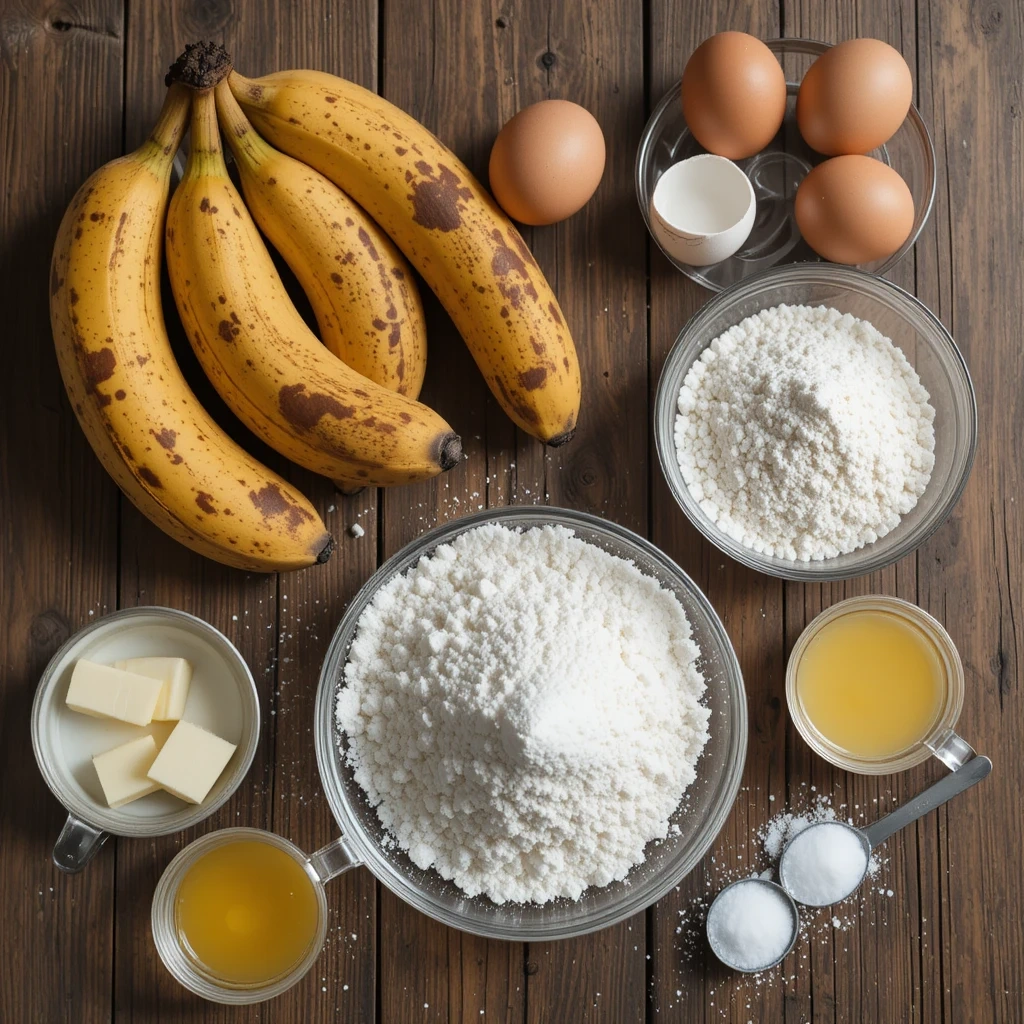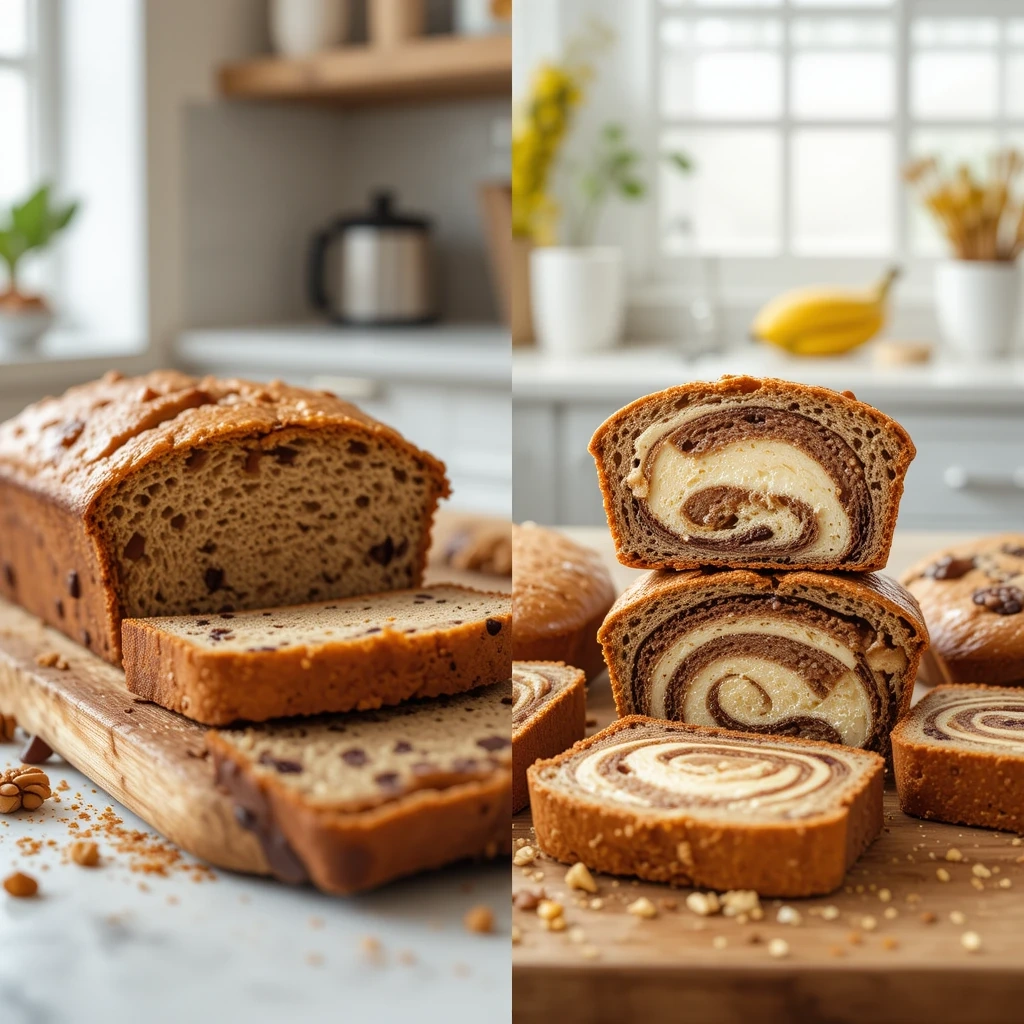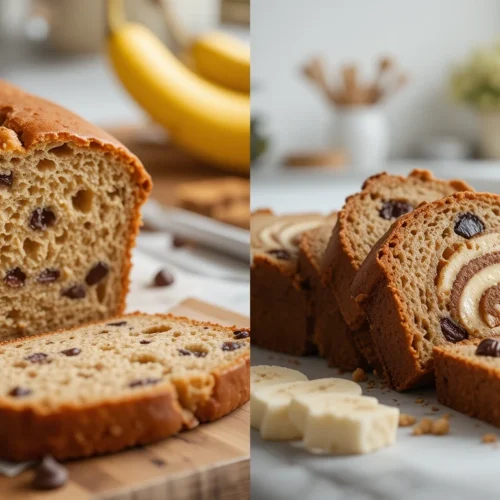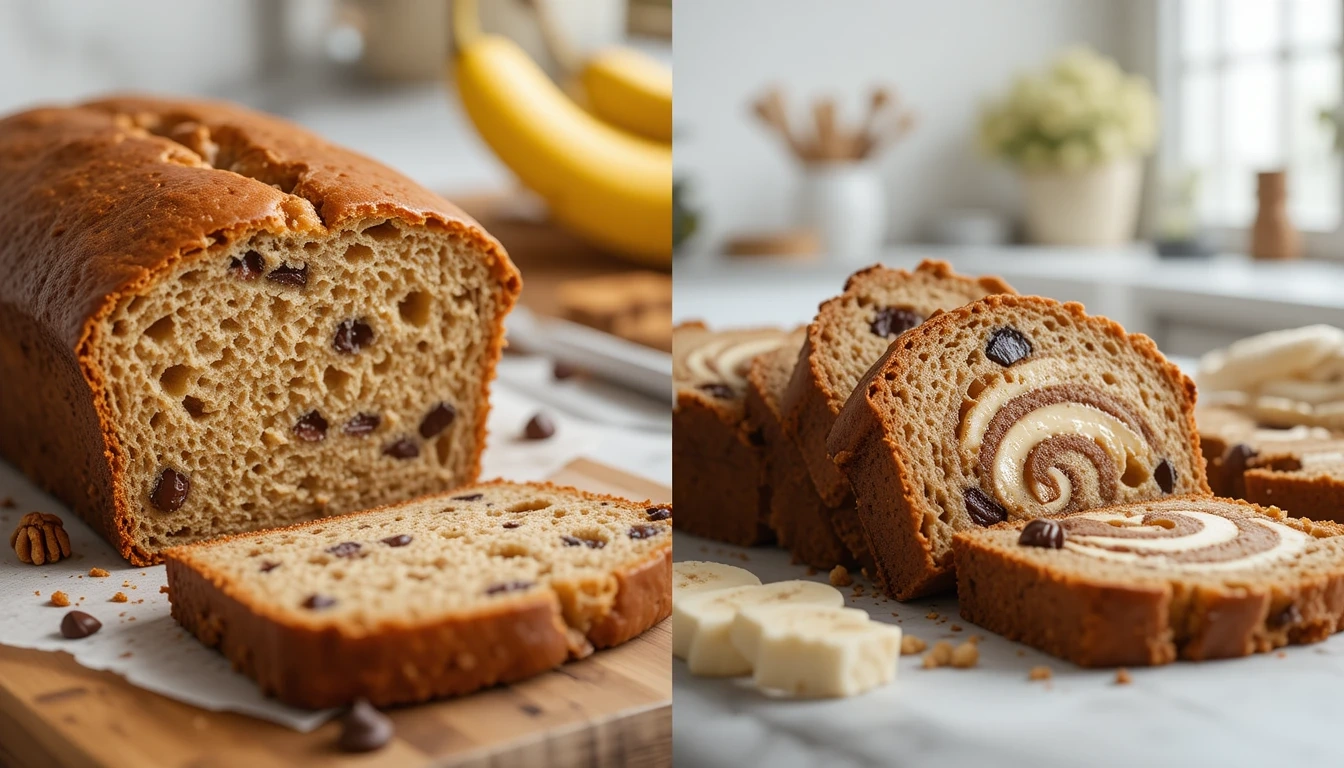Banana bread is more than just a recipe; it’s a comforting classic that evokes memories of home and family. This simple and tasty treat utilizes overripe bananas, transforming them into a delicious loaf perfect for breakfast, a snack, or dessert. With just a few essential ingredients like bananas, flour, sugar, eggs, butter, and baking soda, anyone, even novice bakers, can master this straightforward process. The beauty of banana bread lies in its versatility, offering endless possibilities for variations and additions, from nuts and chocolate chips to spices and dried fruit. Whether served warm with butter or enjoyed with a cup of coffee, banana bread is a timeless delight.
Banana bread holds a special place in my heart, not just for its delightful taste but also for the memories it evokes. I remember the first time I baked it with my grandmother. The kitchen was filled with the sweet aroma of ripe bananas and warm spices, and I can still hear her laughter as we mixed the ingredients together.
It was a simple recipe, yet it brought us closer, creating a bond that I cherish to this day. Banana bread is more than just a treat; it’s a comforting reminder of home and family. Over the years, I’ve come to appreciate the versatility of banana bread.
It’s an excellent method to utilize overripe bananas that might otherwise be discarded. The beauty of this recipe lies in its simplicity; with just a few ingredients, you can whip up a delicious loaf that’s perfect for breakfast, a snack, or even dessert. Whether you enjoy it plain or with a spread of butter, banana bread is a timeless classic that never fails to satisfy.
Table of Contents
Ingredients for the Banana Bread Recipe
The Star of the Show: Ripe Bananas
The star of the show, of course, is two ripe bananas. I always choose bananas that are speckled with brown spots; they’re sweeter and more flavorful.
The Essential Ingredients
Alongside the bananas, you’ll need one cup of granulated sugar, which adds just the right amount of sweetness. You’ll also require one and a half cups of all-purpose flour, which serves as the base for the bread. A pinch of salt enhances the flavors, while one teaspoon of baking soda provides the necessary lift.
Adding Richness and Moisture
Finally, don’t forget about half a cup of melted butter; it adds richness and moisture to the loaf. If you’re feeling adventurous, you can also include an egg for added structure or a splash of vanilla extract for extra flavor.

Step-by-Step Instructions for Making Banana Bread
Making banana bread is a straightforward process that even novice bakers can master. First, preheat your oven to 350°F (175°C). While the oven is warming, use a fork to mash the two ripe bananas in a mixing bowl until they become smooth.
I find this part oddly therapeutic; there’s something satisfying about transforming those lumpy bananas into a creamy mixture. Next, stir in the melted butter until well combined. Then, add the sugar, egg (if using), and vanilla extract, mixing until everything is incorporated.
In a separate bowl, whisk together the flour, baking soda, and salt. Slowly incorporate this dry mixture into the wet ingredients, stirring gently until just combined. Avoid overmixing; it’s okay if there are a few lumps!The anticipation as it bakes is almost unbearable!

Tips for Perfecting Your Banana Bread
| Tip | Description |
|---|---|
| Ripe Bananas | Choose ripe bananas to improve flavor and add sweetness. |
| Proper Mixing | Combine the ingredients gently until they are just mixed to avoid overmixing. |
| Correct Pan Size | Use the right size pan to ensure even baking. |
| Temperature | Bake at the correct temperature for the best results. |
| Testing for Doneness | Use a toothpick to check if the bread is fully baked. |
Over the years, I’ve learned a few tricks to elevate my banana bread game. A crucial suggestion is to make sure your bananas are fully ripe; the more brown spots they possess, the sweeter and more flavorful they will be. your bread will be full of flavor.If you’re in a hurry and don’t have ripe bananas on hand, you can speed up the ripening process by placing them in a paper bag for a day or two.
A helpful suggestion is to allow your banana bread to cool in the pan for approximately 10 minutes before moving it to a wire rack. This can help avoid a soggy bottom. For added flavor, try sprinkling chopped nuts or chocolate chips on top of the batter before baking.
These little additions can take your banana bread from good to extraordinary!
Delight in crafting a charming Hello Kitty Cake with Veibrant Recipes’ comprehensive guide. This tutorial walks you through baking fluffy vanilla cake layers, shaping them using a Hello Kitty template, and adorning the cake with creamy buttercream and fondant decorations. Ideal for birthdays and themed celebrations, the guide offers step-by-step instructions to help both novice and experienced bakers create a visually appealing and delicious centerpiece.

Variations and Additions to the Basic Banana Bread Recipe
While I adore classic banana bread, I often find myself experimenting with different variations to keep things exciting. One of my favorite twists is adding walnuts or pecans for a delightful crunch. The nutty flavor complements the sweetness of the bananas beautifully.
Another variation I enjoy is incorporating spices like cinnamon or nutmeg; they add warmth and depth to the flavor profile. For those who love chocolate, consider folding in some chocolate chips or even swirling in some cocoa powder for a chocolate banana bread experience. If you’re feeling adventurous, try adding shredded coconut or dried fruit like cranberries or raisins for an unexpected burst of flavor.
The possibilities are endless, and each variation brings its own unique charm to this beloved recipe.
Serving and Storing Your Banana Bread
Once your banana bread has cooled completely, it’s time to slice into it and enjoy! I love serving it warm with a pat of butter melting on top; it’s pure bliss. It also pairs wonderfully with a cup of coffee or tea, making it an ideal afternoon snack or breakfast treat.
If you have any leftovers (which is rare in my house), you can store them in an airtight container at room temperature for up to three days. For longer storage, consider wrapping individual slices in plastic wrap and placing them in the freezer.This allows you to have a slice whenever you feel like it!
Just pop it in the microwave for a few seconds or let it thaw at room temperature for a quick and delicious treat.
Discover the beloved Banana Bread recipe from Simply Recipes, renowned for its moist texture and rich flavor. This classic recipe utilizes melted butter to enhance taste and requires just one bowl for preparation, making it both delicious and convenient. With over 2,100 five-star ratings, it’s a tried-and-true favorite among home bakers. The recipe is versatile, allowing for adjustments in sugar levels and the addition of mix-ins like nuts, chocolate chips, or dried fruit to suit your preferences.
Health Benefits of Using Bananas in Baking
Bananas are not only delicious but also packed with health benefits that make them an excellent choice for baking. They are rich in potassium, which is essential for heart health and maintaining proper muscle function. Additionally, bananas contain dietary fiber that aids digestion and helps keep you feeling full longer.
When used in baking, bananas can also reduce the need for added sugars and fats. Their natural sweetness allows you to cut back on sugar without sacrificing flavor, making your baked goods healthier overall. Plus, they provide moisture to recipes like banana bread, resulting in a tender crumb that’s hard to resist.
5 Common Mistakes to Avoid and Their Solutions
As someone who has made my fair share of baking blunders, I’ve learned some common mistakes to avoid when making banana bread. One major pitfall is using under-ripe bananas; they lack the sweetness and flavor needed for a truly delicious loaf. Always opt for fully ripe bananas with plenty of brown spots.
Another mistake is overmixing the batter; this can lead to dense bread instead of light and fluffy goodness. Mix just until combined! Additionally, be cautious about baking time; every oven is different, so keep an eye on your bread as it bakes.
If it’s browning too quickly on top but still raw inside, cover it loosely with foil until fully cooked. Lastly, don’t forget to let your banana bread cool before slicing! If you cut it too early, it might end up with a gummy texture.
Patience is key here; trust me, it’s worth the wait for that perfect slice!
FAQs
What is banana bread?
Banana bread is a moist, sweet bread made with ripe bananas. It is a popular baked good that is often enjoyed for breakfast or as a snack.
What are the ingredients for a basic banana bread recipe?
A typical banana bread recipe usually consists of ripe bananas, flour, sugar, eggs, butter, baking soda, and salt. Optional ingredients may include nuts, chocolate chips, or spices.
What are the step-by-step instructions for making banana bread?
The step-by-step instructions for making banana bread usually involve mashing the ripe bananas, mixing the wet and dry ingredients separately, combining them, and then baking the batter in a loaf fry until it reaches a golden brown color and a toothpick inserted in the middle emerges clean.
What are some tips for perfecting banana bread?
Some tips for perfecting banana bread include using ripe bananas for maximum flavor, not overmixing the batter, and adjusting the baking time and temperature as needed for your specific oven.
What are some variations and additions to the basic banana bread recipe?
Some variations and additions to the basic banana bread recipe include adding nuts, chocolate chips, dried fruit, or spices such as cinnamon or nutmeg to customize the flavor and texture of the bread.
How should banana bread be served and stored?
Banana bread can be served warm or at room temperature, and it should be stored in an airtight container at room temperature for up to 3 days, or in the refrigerator for up to a week.
What are the health benefits of using bananas in baking?
Using bananas in baking can add natural sweetness, moisture, and a boost of potassium, fiber, and vitamins to the finished baked goods.
What are 5 common mistakes to avoid when making banana bread and their solutions?
Some common mistakes to avoid when making banana bread include using unripe bananas, overmixing the batter, not adjusting the baking time and temperature for your specific oven, and not allowing the bread to cool completely before slicing. Solutions include using ripe bananas, being mindful of mixing, and adjusting baking time and temperature as needed.

banana bread recipe-with 2-bananas
Ingredients
- 2 ripe bananas
- 1 cup granulated sugar
- 1.5 cups all-purpose flour
- 1/2 cup melted butter
- 1 teaspoon baking soda
- Pinch of salt
- 1 egg optional
- Splash of vanilla extract optional
- Nuts optional
- Chocolate chips optional
- Spices optional
- Pros:
- Easy to make even for novice bakers
- Great way to use overripe bananas
- Versatile recipe with many possible variations
- Moist and flavorful
- Comforting and nostalgic treat
- Cons:
- Can be high in sugar
- Overmixing can result in a dense loaf
Instructions
- Preheat oven to 350°F (175°C).
- Mash ripe bananas in a mixing bowl until smooth.
- Stir in melted butter, sugar, egg (if using), and vanilla extract until well combined.
- In a separate bowl, whisk together flour, baking soda, and salt.
- Slowly incorporate dry ingredients into wet ingredients, stirring gently until just combined. Avoid overmixing.
- Pour batter into a greased loaf pan.
- (Optional) Sprinkle chopped nuts or chocolate chips on top.
- Bake for 50-60 minutes, or until a toothpick inserted into the center comes out clean. If browning too quickly, cover loosely with foil.
- Let cool in the pan for 10 minutes before transferring to a wire rack to cool completely.

